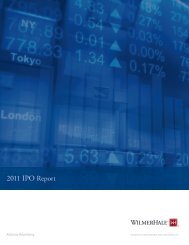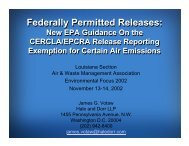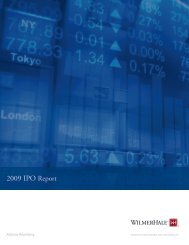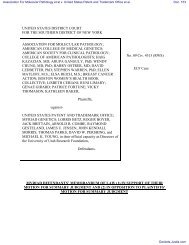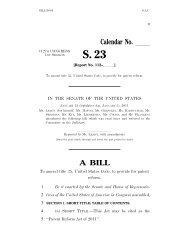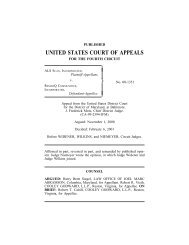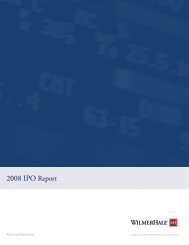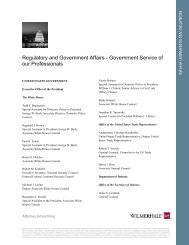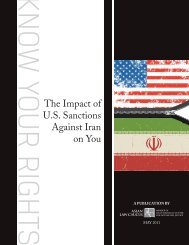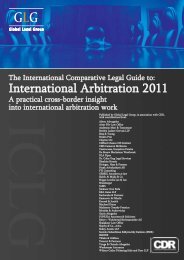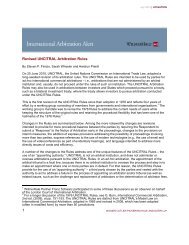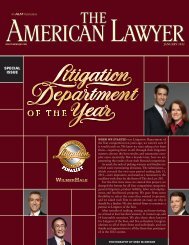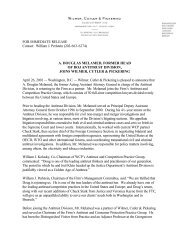Innogenetics, N.V. v. Abbott Laboratories - WilmerHale
Innogenetics, N.V. v. Abbott Laboratories - WilmerHale
Innogenetics, N.V. v. Abbott Laboratories - WilmerHale
Create successful ePaper yourself
Turn your PDF publications into a flip-book with our unique Google optimized e-Paper software.
proposed jury instruction, rather than by bringing the matter directly to the attention ofthe court and opposing counsel.”We review procedural issues not unique to patent law under regional circuit law.Bowling v. Hasbro, Inc., 403 F.3d 1373, 1375 (Fed. Cir. 2005). Absent extraordinarycircumstances, the Seventh Circuit has stated that it rarely reaches forfeited argumentsin civil litigation. Ocean Atl. Dev. Corp. v. Aurora Christian Sch., Inc., 322 F.3d 983,1005 (7th Cir. 2003). <strong>Abbott</strong>’s belief that “there was no need to raise [its argument] priorto the court adopting a claim construction not proposed by either party” falls well short ofextraordinary. Accordingly, we affirm the district court’s finding that <strong>Abbott</strong> had beenfully heard on the issue of literal infringement and that there was no legally sufficientevidentiary basis for a reasonable jury to find for <strong>Abbott</strong> on that issue. See Fed. R. Civ.P. 50.It should be noted that, forfeiture aside, <strong>Abbott</strong>’s argument lacks merit.Essentially, <strong>Abbott</strong> argues that a patent can never be literally infringed by embodimentsthat did not exist at the time of filing. Our case law allows for after-arising technology tobe captured within the literal scope of valid claims that are drafted broadly enough. SeeSuperGuide Corp. v. DirecTV Enters., Inc., 358 F.3d 870, 878-80 (Fed. Cir. 2004)(finding that the claim limitation “regularly received television signal” is broad enough toencompass digital signals even though no televisions that could receive digital signalsexisted as of the filing date).Additionally, <strong>Abbott</strong> itself has put forth evidence that Realtime PCR did in factexist by the time the inventors filed their PCT application in 1992, and by the time theyapplied for the ’704 patent in 1994. In his expert report, <strong>Abbott</strong>’s witness, Dr. Bruce2007-1145, -1161 9



